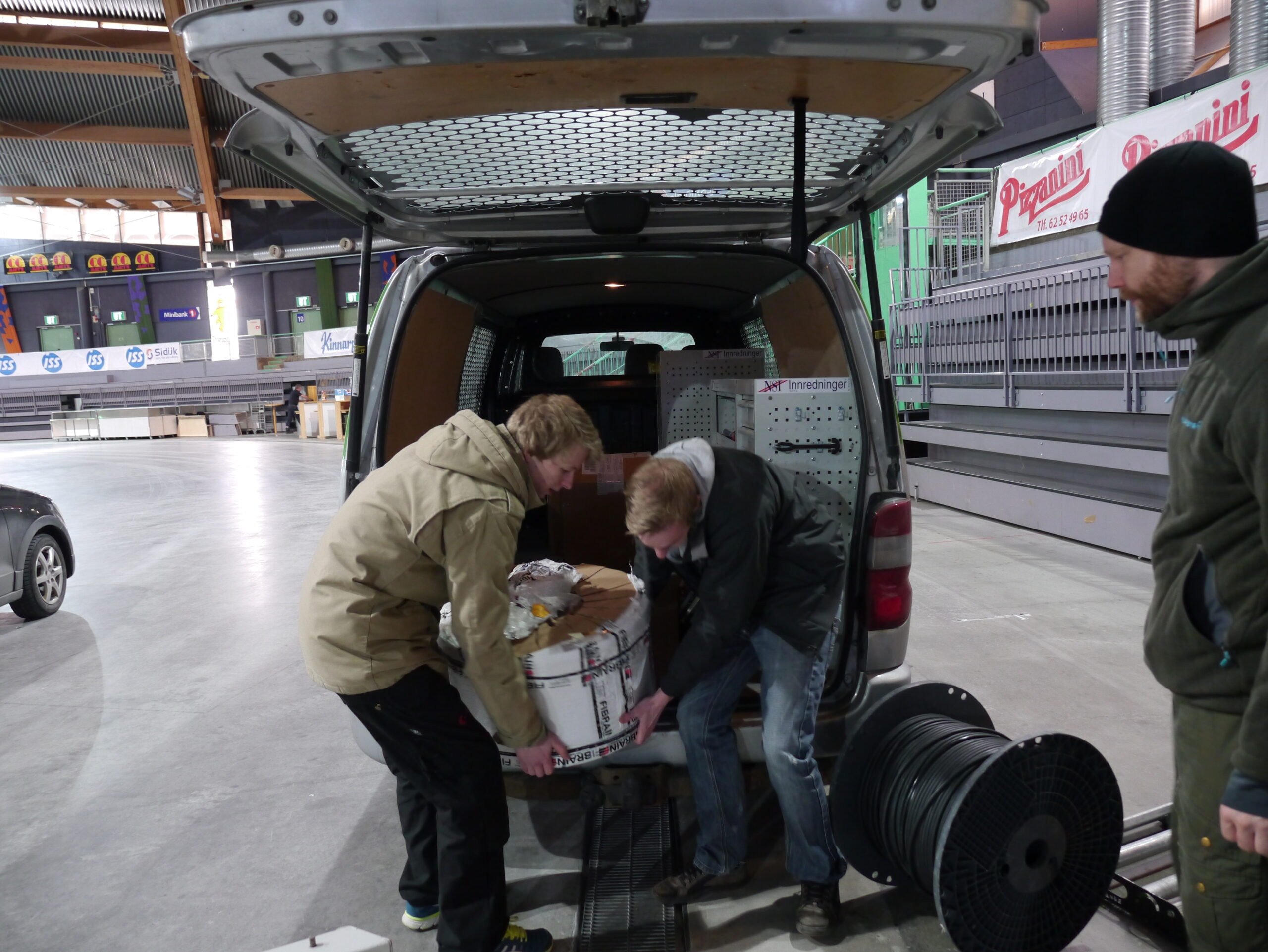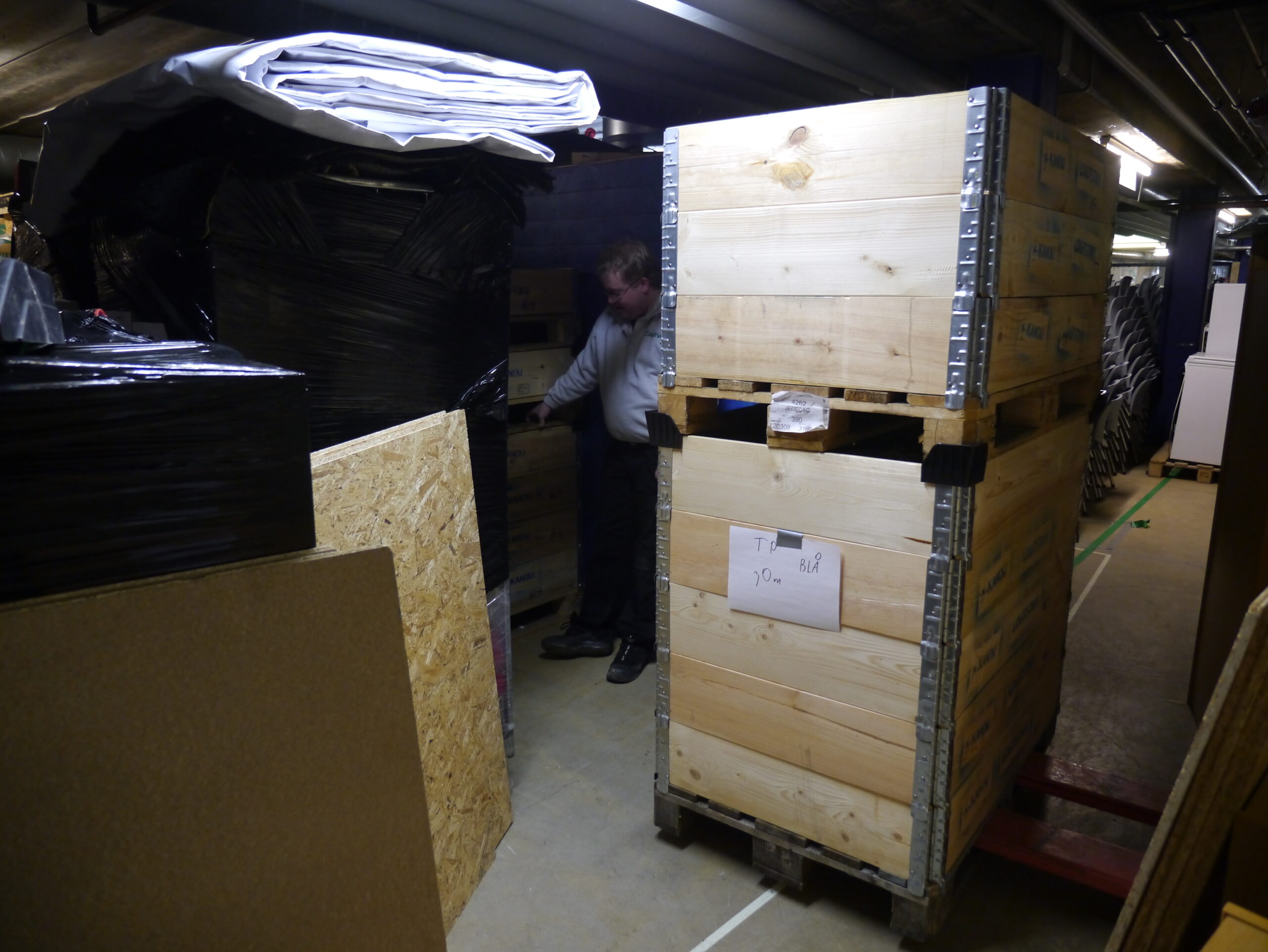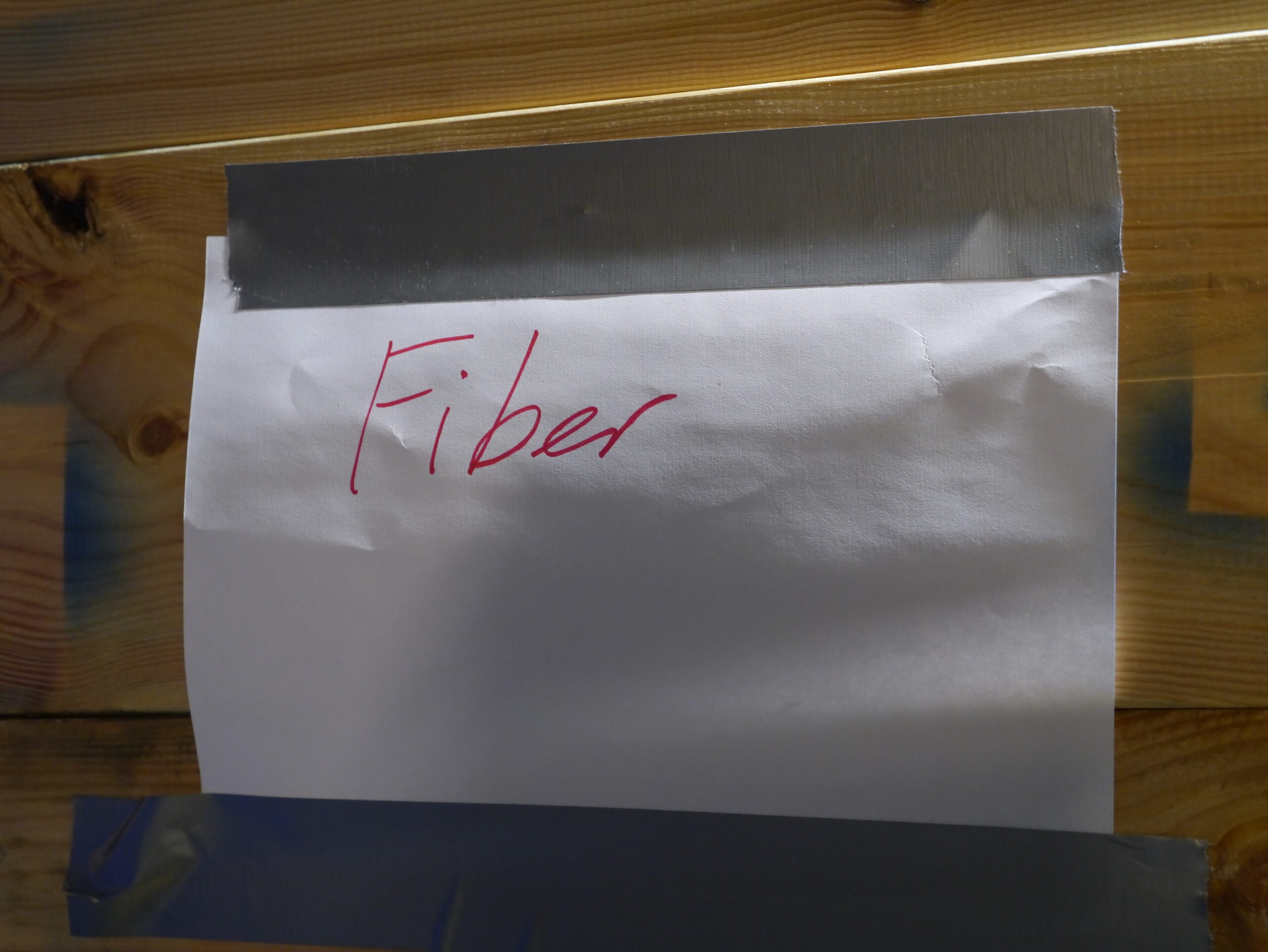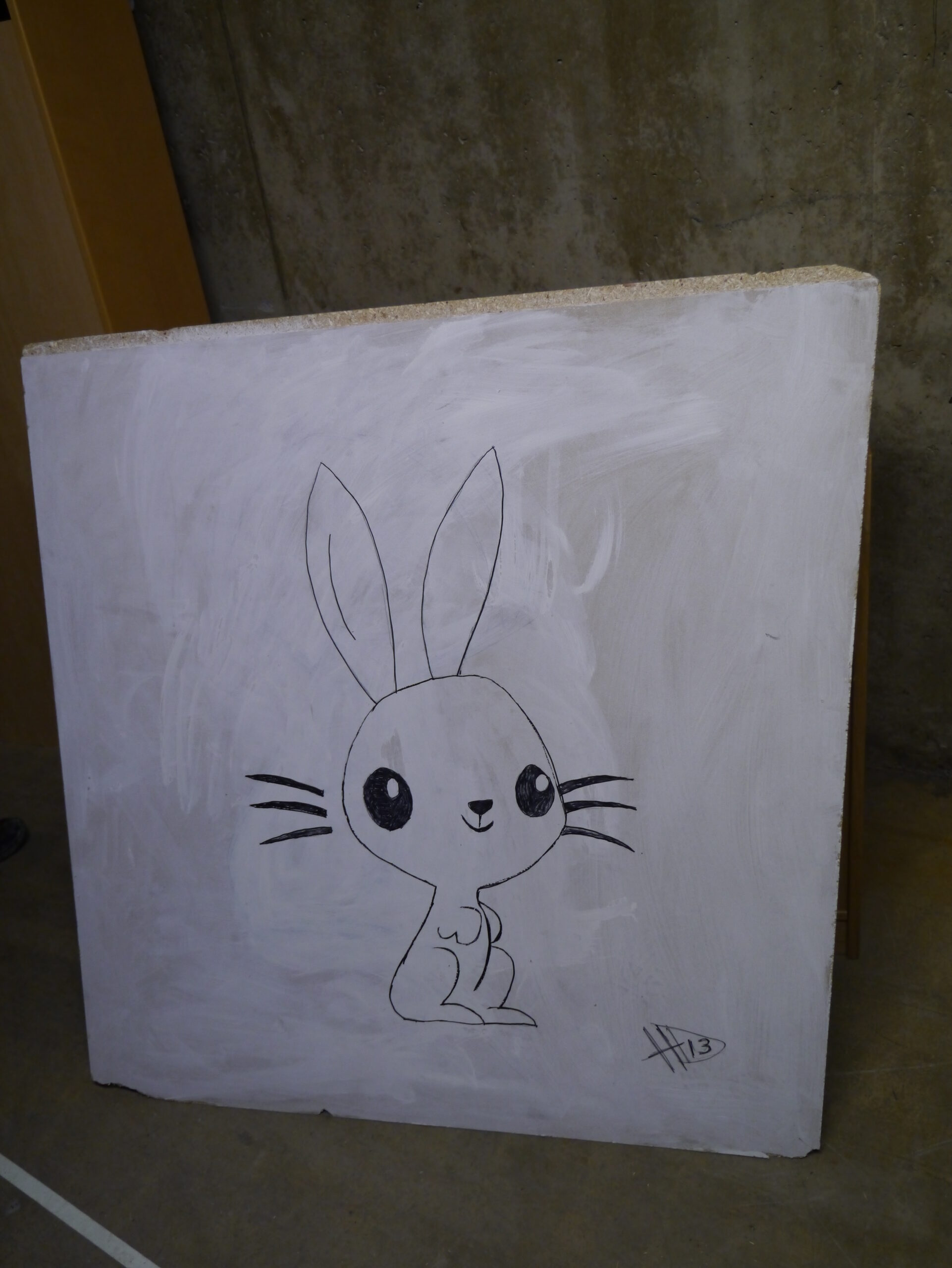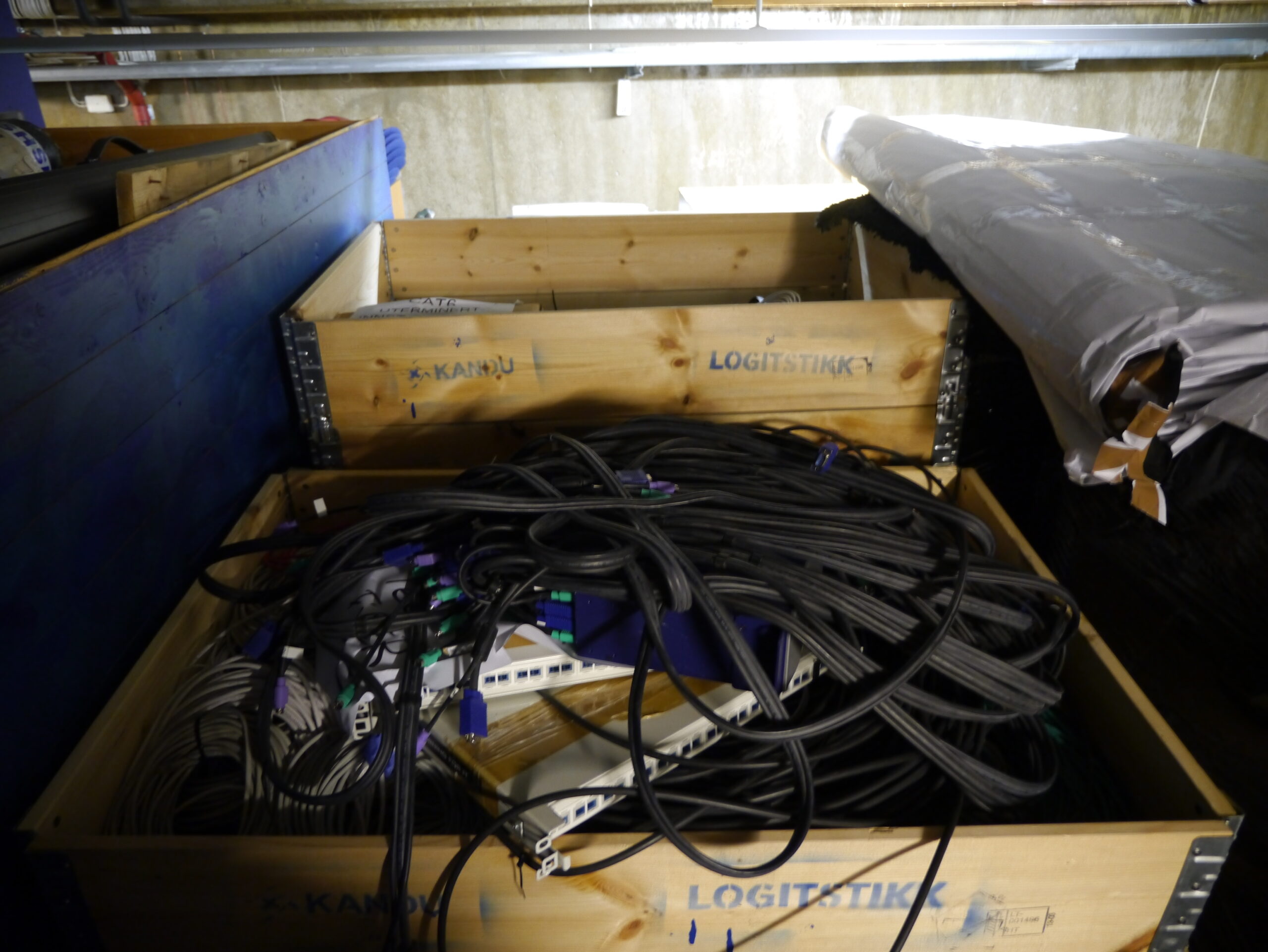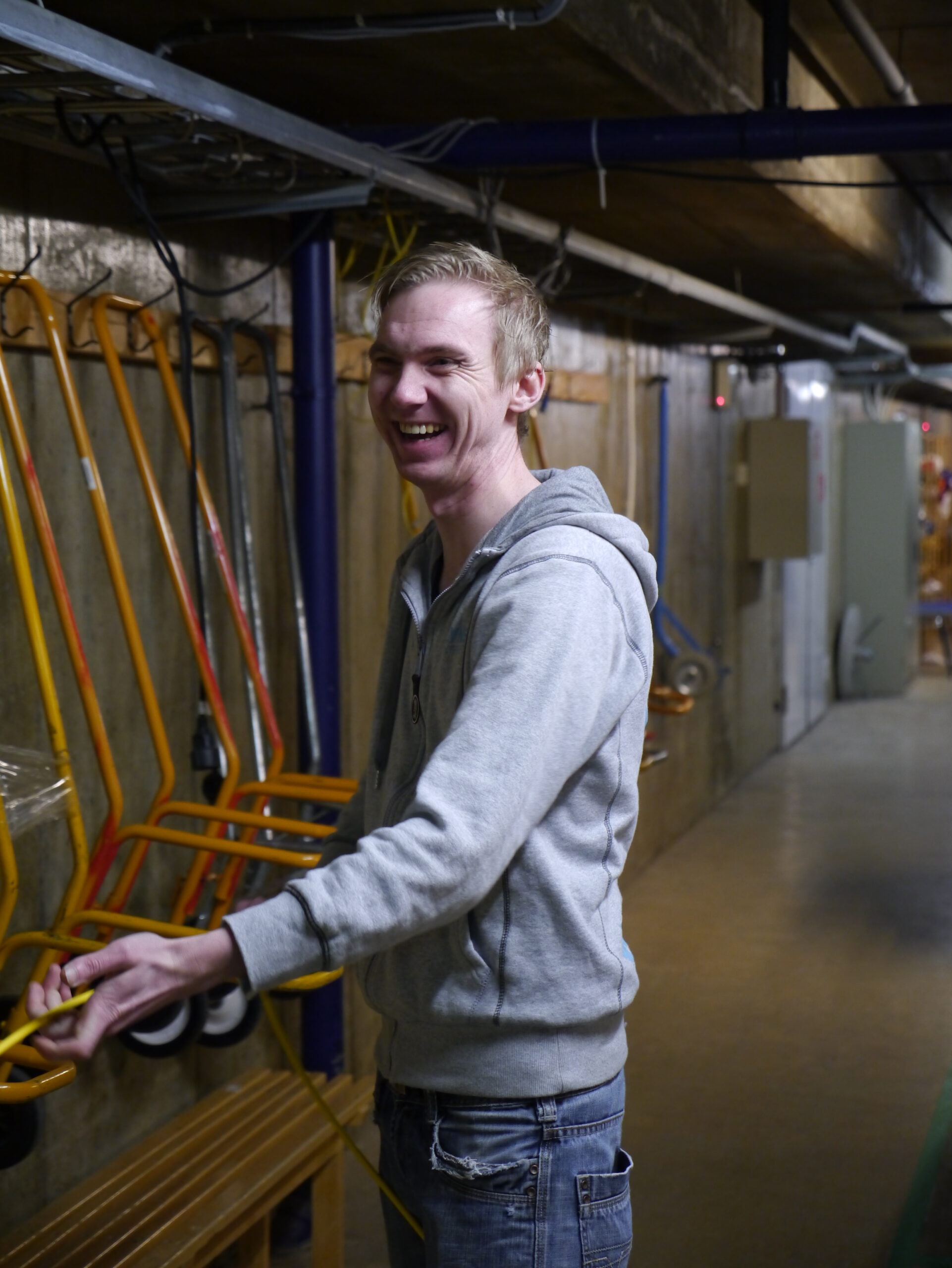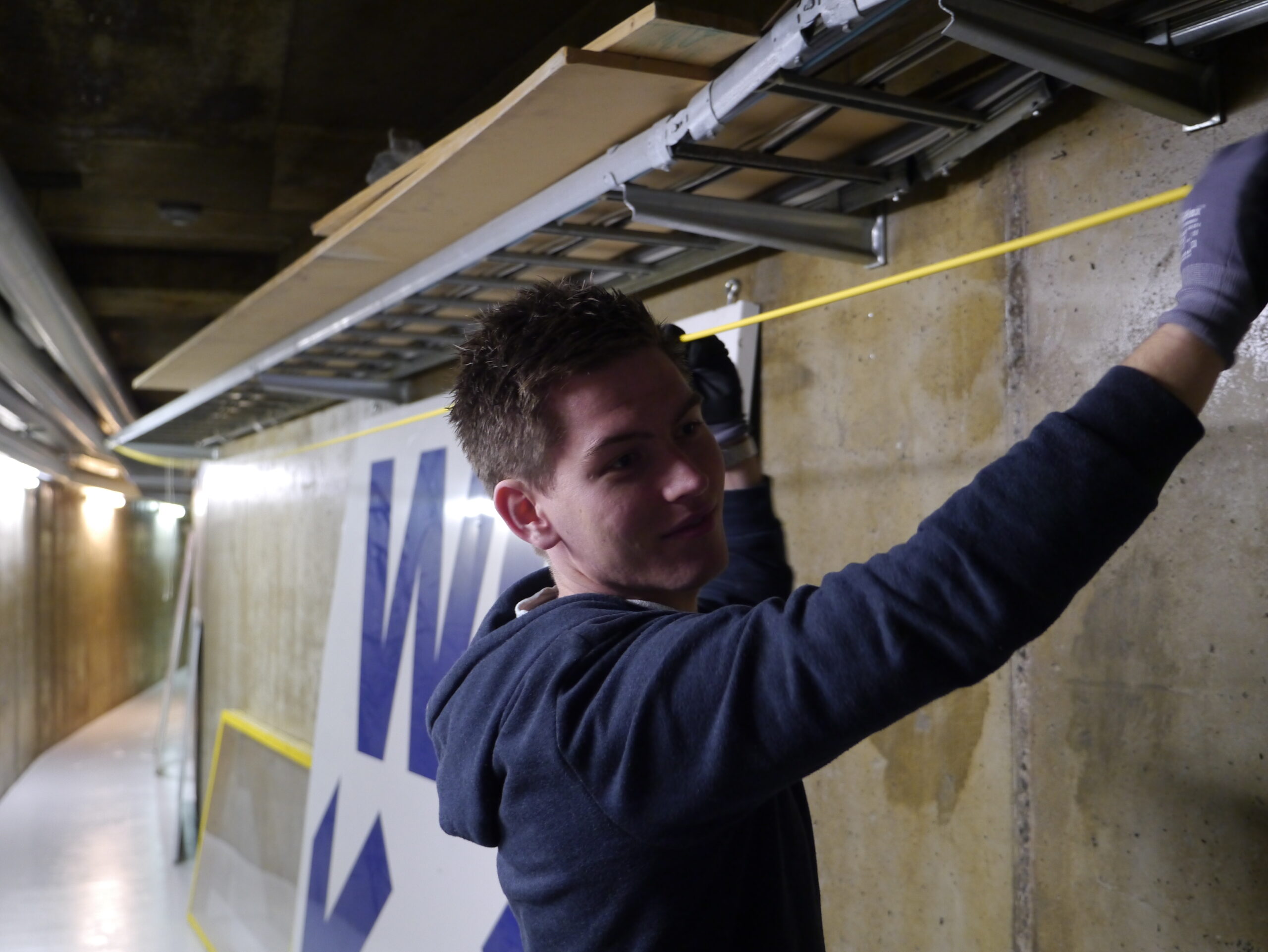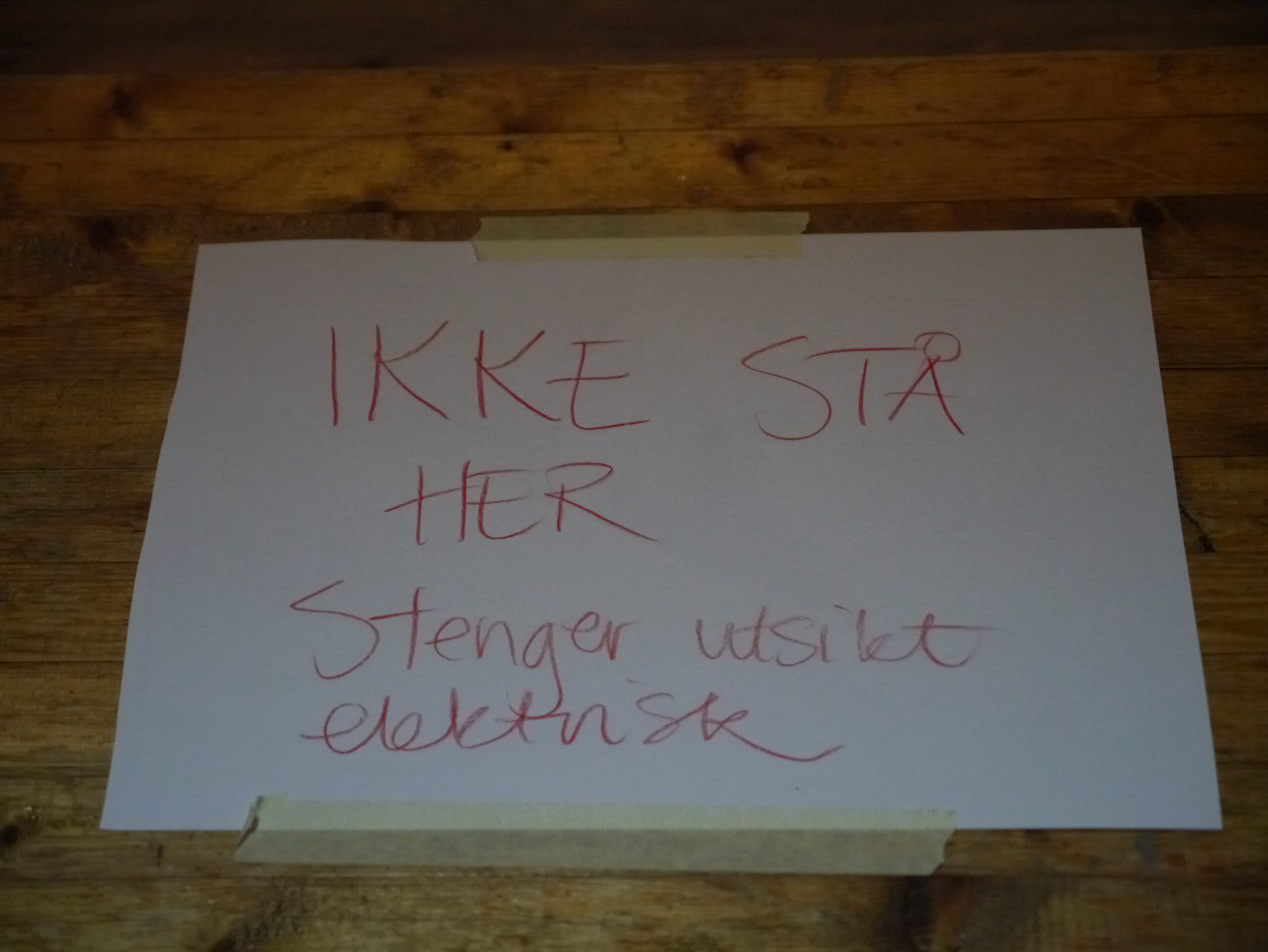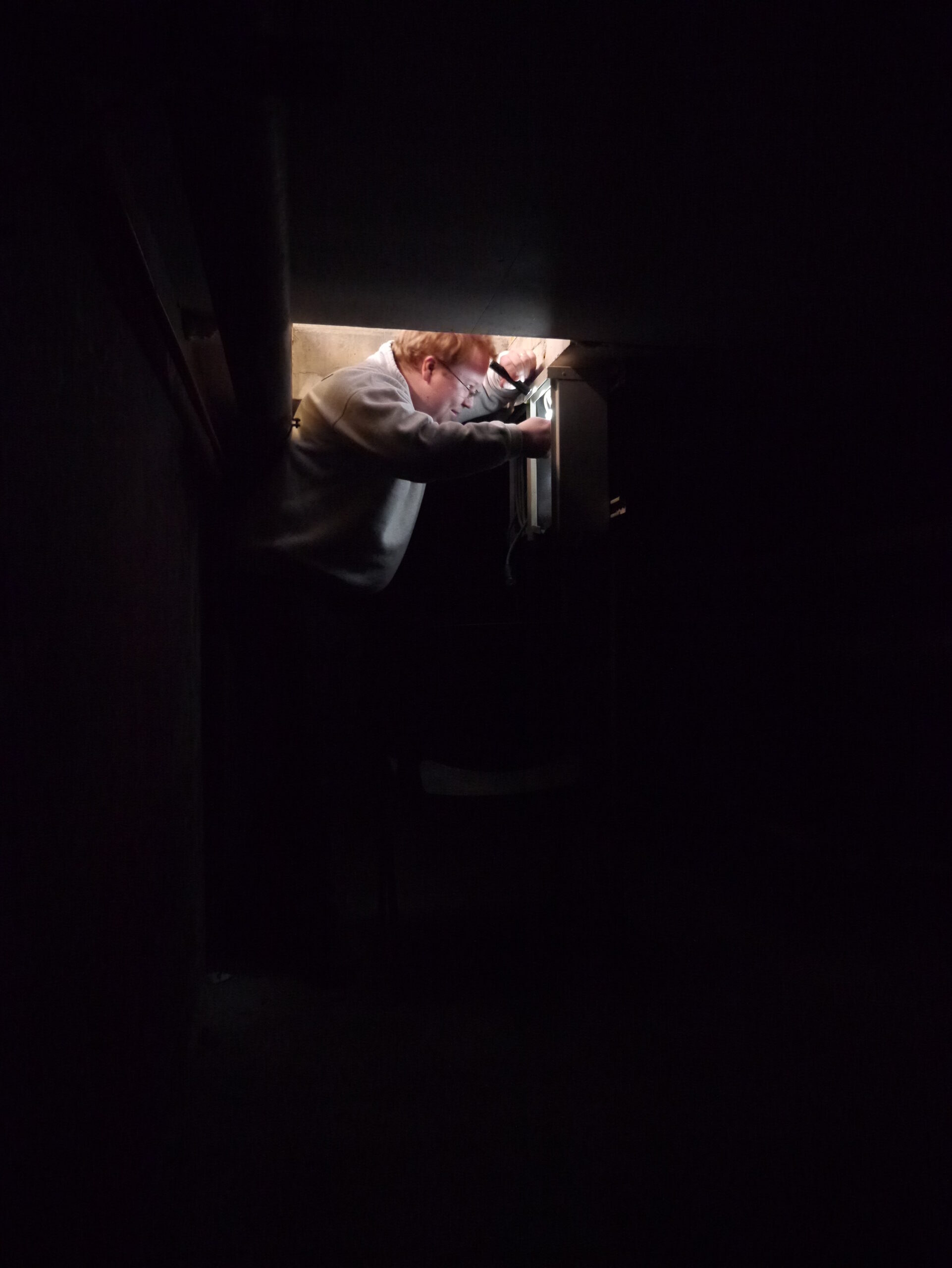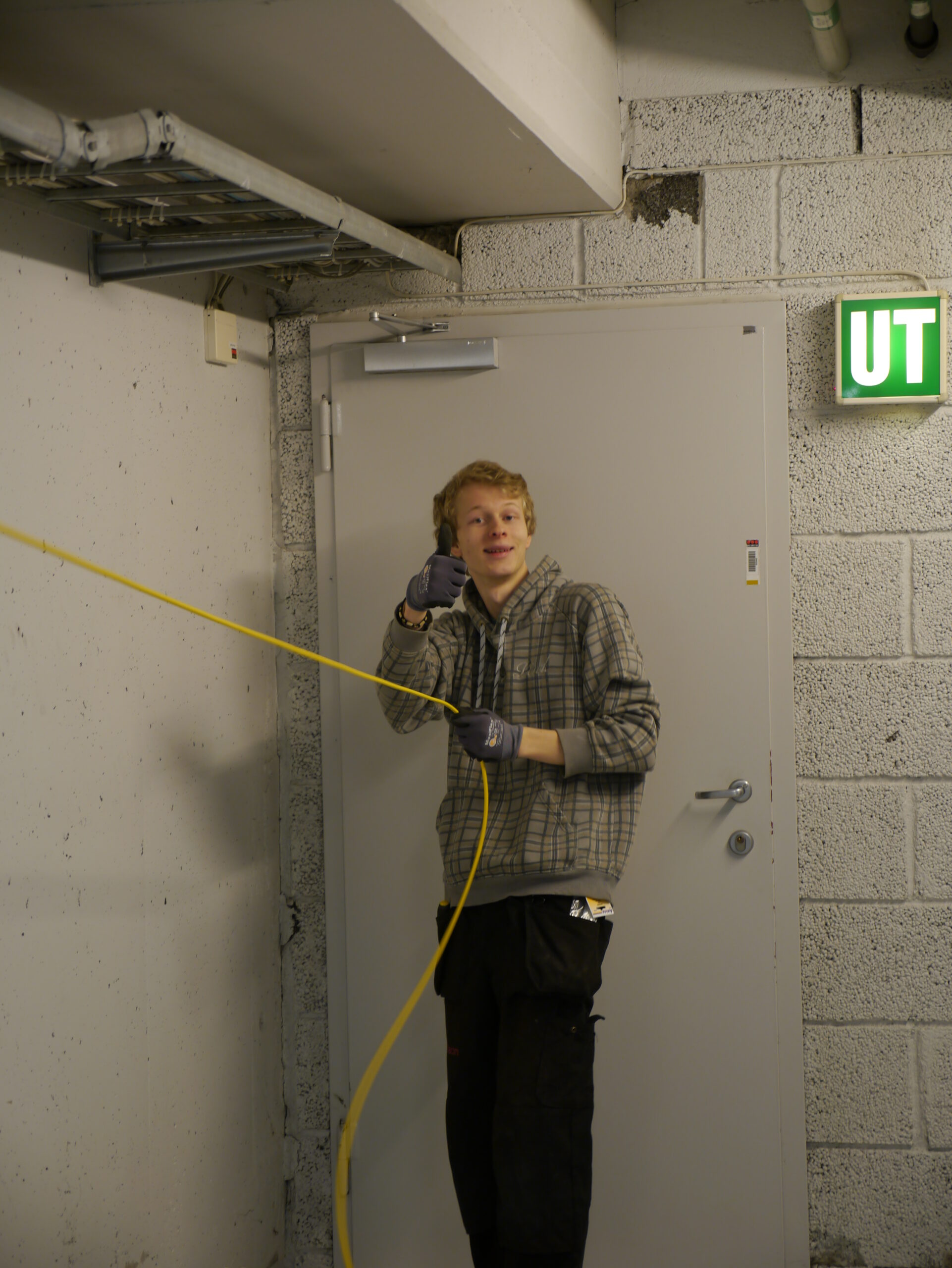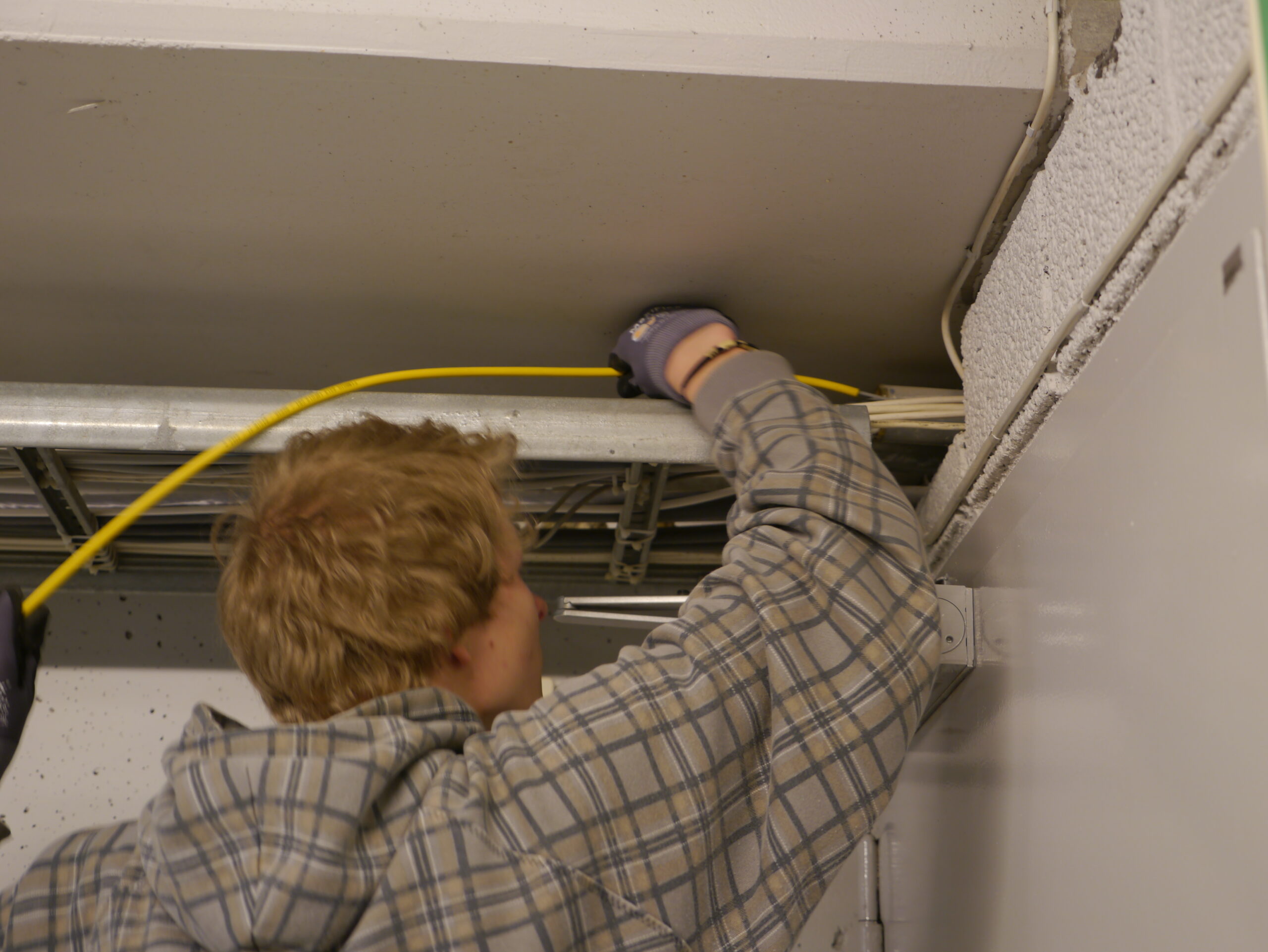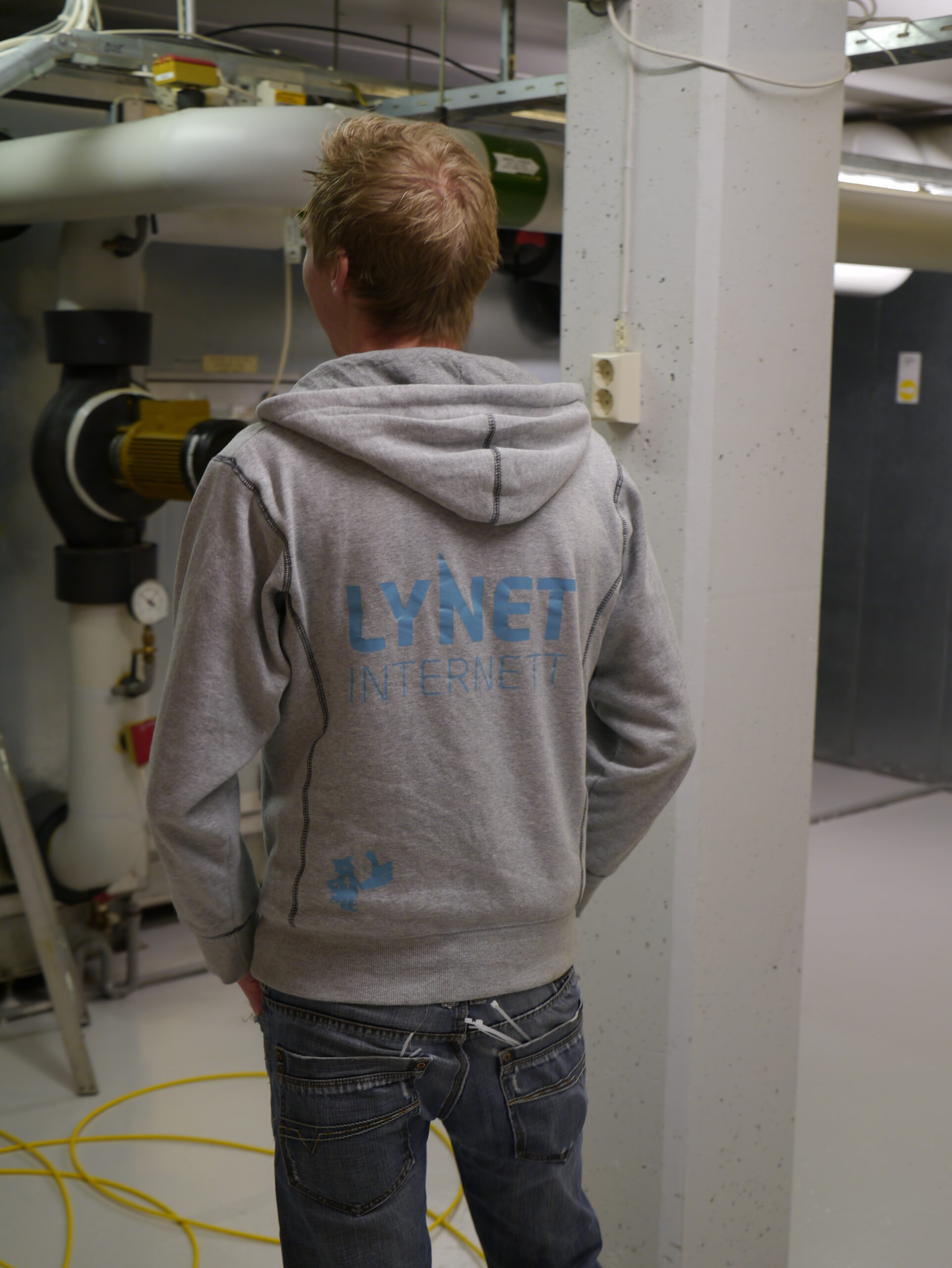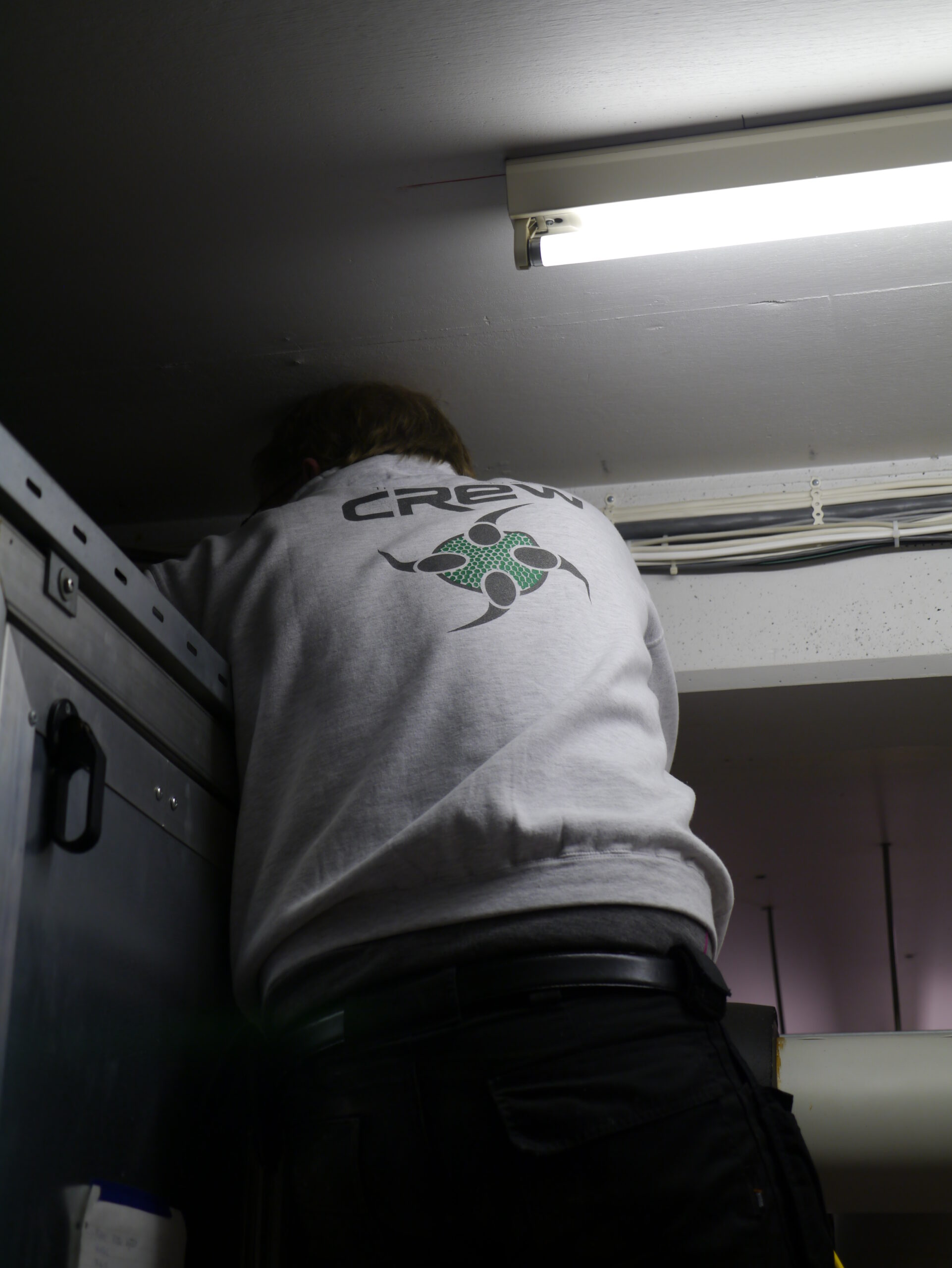Fiber optics improvements in Vikingskipet #1
We have been working on improving the infrastructure inside of Vikingskipet.
We started with documenting a lot of cable runs at TG13, and we have between TG13 and TG14 been laying plans for how to make the situation better for not only TG14, but for years to come.
One part of the planning was to visit Vikingskipet and map the cable runs in January, to see how and where things are – and to better map the needs.
After that we had a design meeting which lead to the design we landed on:
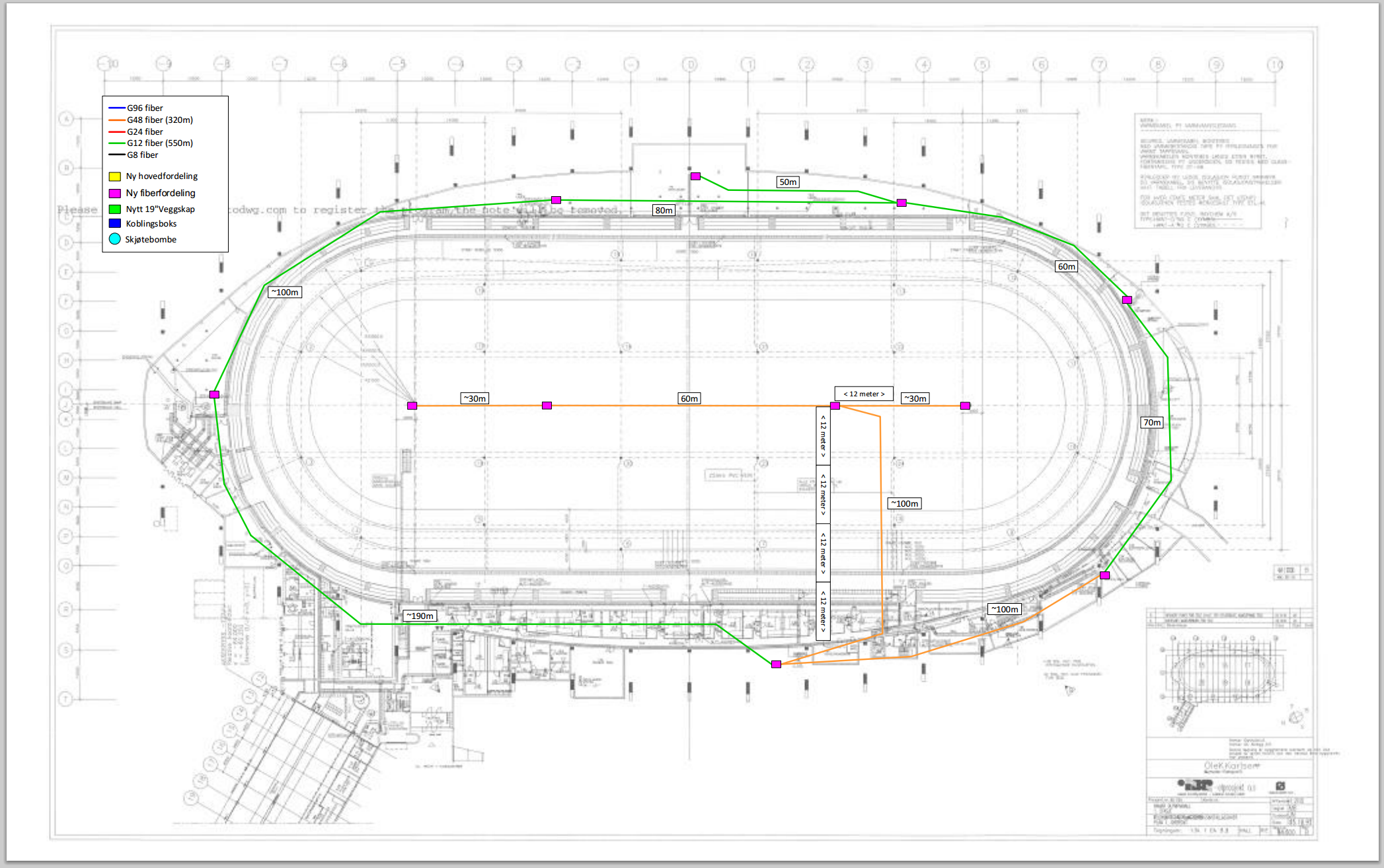 (This is not the final version.)
(This is not the final version.)
Based on the design we could calculate how much equipment we needed. And we started to call around to find the best prices. When we landed on a minimum cost of the installation we got the cost approved in the budget and we could start ordering the equipment.
Quickly after the first and most important batch of equipment arrived (the two cable drums), and we could travel up to Hamar to start the installation.
We have completed the first of two weekends of installation. In the first weekend we completed all the cable runs, and everything is ready for the next weekend – when we will weld the fiber optics (with pigtails) and install them in duplexes into ODF’s.
The longest run around the hall is 633 meters of G12 fiber (6 pairs) and the most traffic intensive run are 353 meters of G48 (24 pairs). Everything is single mode.
I recommend you to read a bit here if you don’t know what fiber optic cables are:
http://en.wikipedia.org/wiki/Optical_fiber_cable
This is what a typical ODF looks like:

The blue “connectors” is called fiber adapters.
The small cables beneath is the actual fiber, and they are welded onto pigtails:
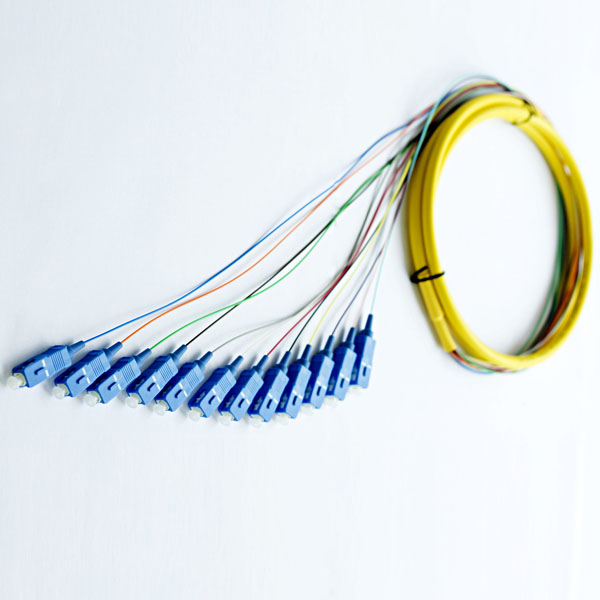 Which is connected into the fiber adapter, which also could be called a extender.
Which is connected into the fiber adapter, which also could be called a extender.
The reason why we say G12 (6 pairs) is because most fiber optic installations there’s one single fiber for Rx (receive) and one single fiber for Tx (transmit). There are possibilities to actually run Rx and Tx on one single fiber – the method uses different wavelength for Rx and Tx which requires special optical transceivers which can translate this.
There’s a lot of different form factors for optical transceivers, but the most common today is called SFP (+) – the form factor is SFP and the + indicates that it is 10Gig ready:
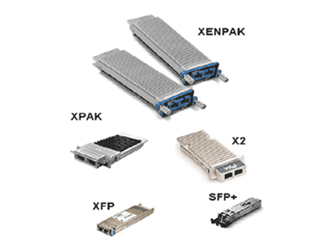
In our setup we have mostly SFP+ and we are running single mode 10G transceivers between all of our nodes.
Most of the permanent infrastructure we already have is either old multi mode, or too few single mode pairs.
With this improvement we are able to run a more redundant setup, we can run more 10Gig connections between many more places and will give us much more flexibility.
Also worth mentioning is that we have purchased MPO cables, which is a G12 single mode cable with one single connector in both ends where you connect cassettes with connectors (they work as a mini-ODF):
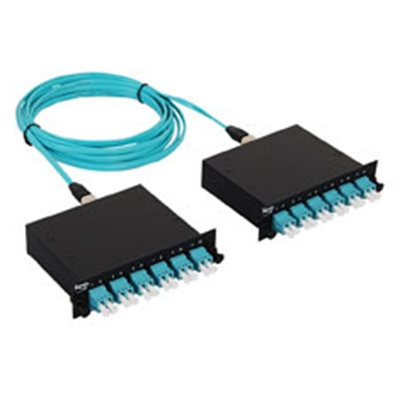
(The MPO cable with MPO connectors to the left and to the right the cassettes).
We will drop these cables from the bridge in the top (roof), this way can we do the cabling down to our distribution and core equipment in no time – at the same time as the cabling is not in the way for anyone.
Beneath are pictures from the first trip to Vikingskipet, where we pulled all the cables through Vikingskipet. Next time is welding time! 🙂
